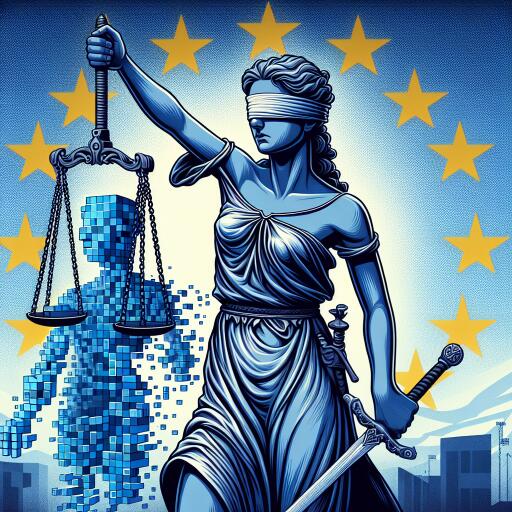EU Takes Firm Stance on Deepfake Regulation Amid Rising Concerns
As the digital landscape continues to evolve, so do the challenges that come with it, particularly in the realm of deepfake technology. The European Union (EU) is at the forefront, tackling the growing concerns surrounding deepfakes and their potential impact on democracy, public trust, and privacy. With the implementation of the AI Act, the EU is taking proactive steps to regulate artificial intelligence (AI) systems, specifically focusing on deepfakes, to ensure transparency, accountability, and adherence to fundamental rights.
Introducing the AI Act: A Balanced Approach to Deepfake Regulation
The AI Act serves as the cornerstone of the EU’s strategy to address the challenges posed by AI systems, including deepfakes. Recognizing the complexity of AI-generated content, the Act refrains from imposing blanket bans. Instead, it categorizes deepfakes as “limited risk” AI systems. This classification subjects them to more lenient regulations compared to high-risk systems such as medical AI or facial recognition technologies. However, this decision has sparked debate, with many advocating for deepfakes to be considered high-risk due to their potential for significant harm.
One of the critical aspects of the AI Act is its focus on transparency. According to Article 52(3), creators of deepfakes are required to disclose the artificial nature of their content and the techniques used in its creation. This measure aims to protect consumers from manipulation and disinformation by making them aware of the content they encounter. Despite these requirements, there remains skepticism about their effectiveness in curbing malicious uses, especially if creators find ways to bypass these disclosures.
Safeguarding Digital Integrity: The Role of the EU AI Office
In an effort to strengthen its regulatory framework and ensure the Act’s successful implementation, the EU has established the AI Office. This body is charged with promoting responsible AI practices and addressing the complexities related to deepfakes at the Union level. By progressively developing codes of practice and regulating through implementing acts, the AI Office plays a crucial role in upholding standards and mitigating the risks associated with deepfake technology.
The Debate Over Criminalizing Deepfakes
The rise of deepfakes has prompted calls from various quarters for their criminalization, especially for end users. Advocates argue that criminal penalties could serve as a deterrent against using deepfakes for fraudulent activities, political manipulation, and the distribution of harmful content. However, the push for criminalization brings to the fore complex issues concerning the protection of free speech, privacy rights, and technological innovation.
Determining effective enforcement mechanisms and encouraging international cooperation become paramount in combating the transnational nature of deepfake threats. The EU finds itself navigating a delicate balance, striving to foster an environment where digital literacy and critical thinking are paramount. Equipping citizens with the skills to distinguish between authentic and manipulated content is essential for safeguarding the integrity of digital spaces.
In conclusion, the EU’s approach to regulating deepfakes through the AI Act signifies a commitment to navigating the challenges posed by AI with a balanced hand. By prioritizing transparency, establishing regulatory bodies, and engaging in ongoing debates about criminalization, the EU endeavors to create a digital environment where innovation thrives while protecting the rights and well-being of its citizens. As deepfake technology continues to evolve, so too will the regulatory frameworks designed to manage its impact, ensuring that digital advancements serve to enhance society rather than undermine it.










